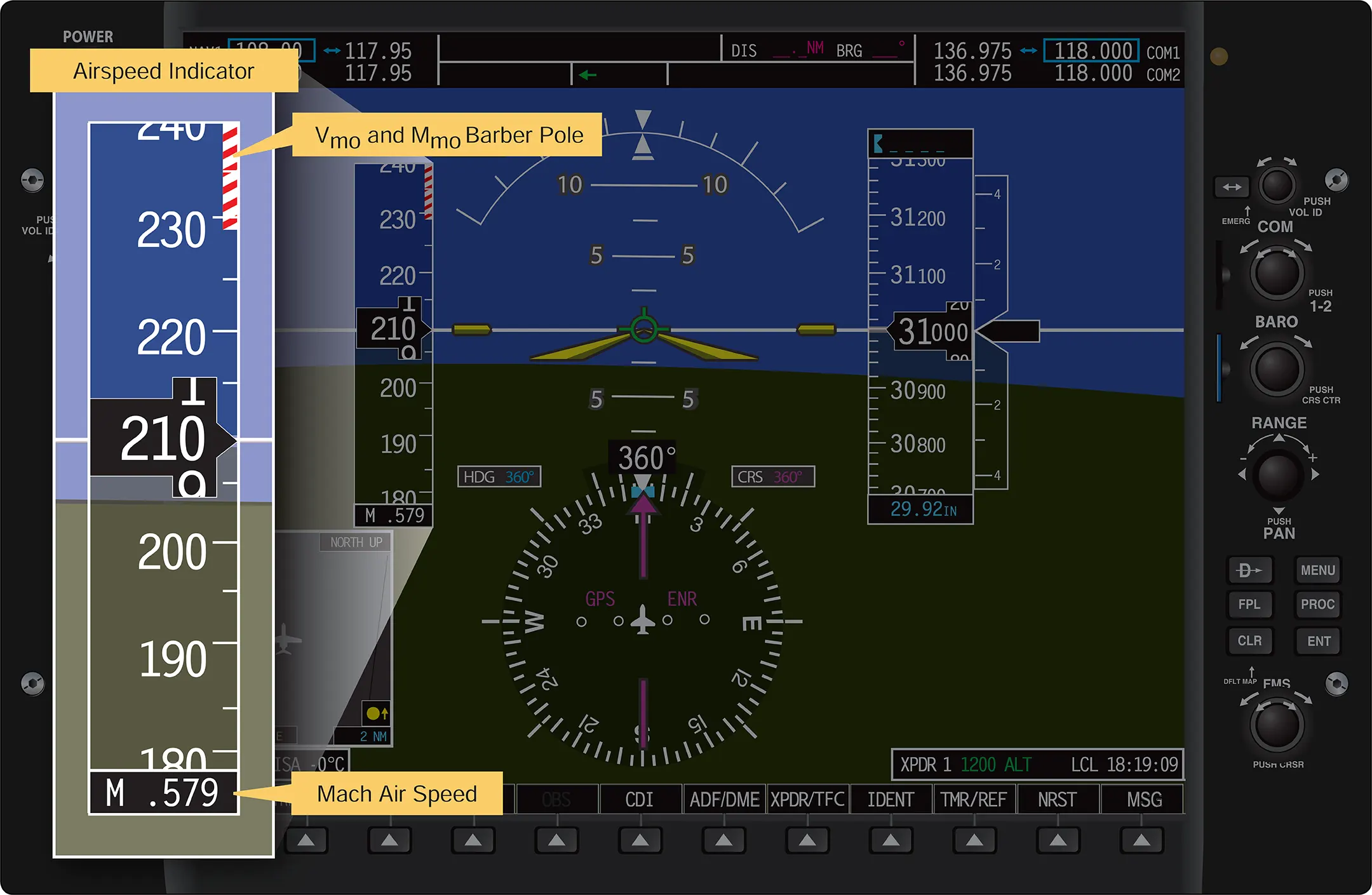Maximum speeds in jet airplanes are expressed differently and always define the maximum operating speed of the airplane, which is comparable to the VNE of the piston airplane. These maximum speeds in a jet airplane are referred to as:
- VMO —maximum operating speed expressed in terms of knots.
- MMO —maximum operating speed expressed as a Mach number (the decimal ratio of true airspeed to the speed of sound).
Mach number is the ratio of true airspeed to the speed of sound. The speed of sound varies with temperature. At low/warm altitudes, the speed of sound is so high that an aircraft is limited by indicated airspeed. At high/cold altitudes, the speed of sound is lower so the aircraft is limited by Mach. To observe both limits VMO and MMO, the pilot of a jet airplane needs both an airspeed indicator and a Mach indicator. In most jet airplanes, these are combined into a single display for airspeed and Mach number, as appropriate.
It looks much like a conventional airspeed display with the addition of a “barber pole” that automatically moves so as to indicate the applicable speed limit at all times. [Figure 1]

A jet airplane can easily exceed its speed limitations. The handling qualities of a jet may change significantly at speeds higher than the maximum allowed.
High-speed airplanes designed for subsonic flight are limited to some Mach number below the speed of sound. Shock waves (and the adverse effects associated with them) can occur when the airplane speed is substantially below Mach 1.0. The Mach number at which some portion of the airflow over the wing first equals Mach 1.0 is termed the critical Mach number (MCR).
There is no particular problem associated with the acceleration of the airflow up to the critical Mach number, the point where Mach 1.0 airflow begins. However, a shock wave is formed at the point where the airflow suddenly returns to subsonic flow. This shock wave becomes more severe and moves aft on the wing as airflow velocity increases. Eventually, flow separation occurs behind the well-developed shock wave. [Figure 2]

If airplane speed progresses sufficiently beyond MMO, the separation of air behind the shock wave may result in severe buffeting and possible loss of control or “upset.” Because of the accompanying changes to the center of lift, the airplane may exhibit pitch change tendencies.
With increased speed and the aft movement of the shock wave, the wing’s center of pressure moves aft causing the start of a nose-down tendency or “tuck.” Mach tuck develops gradually, and the condition should not be allowed to progress to where there is no longer enough elevator authority to prevent entry into a steep, sometimes unrecoverable, dive. An alert pilot should respond to excessive airspeed, buffeting, or warning devices before the onset of extreme nose-down forces.
Due to the critical aspects of high-altitude/high-Mach flight, most jet airplanes capable of operating in the Mach ranges use some form of automated Mach tuck compensation. If the system becomes inoperative, the airplane is typically limited to a reduced maximum Mach number.
